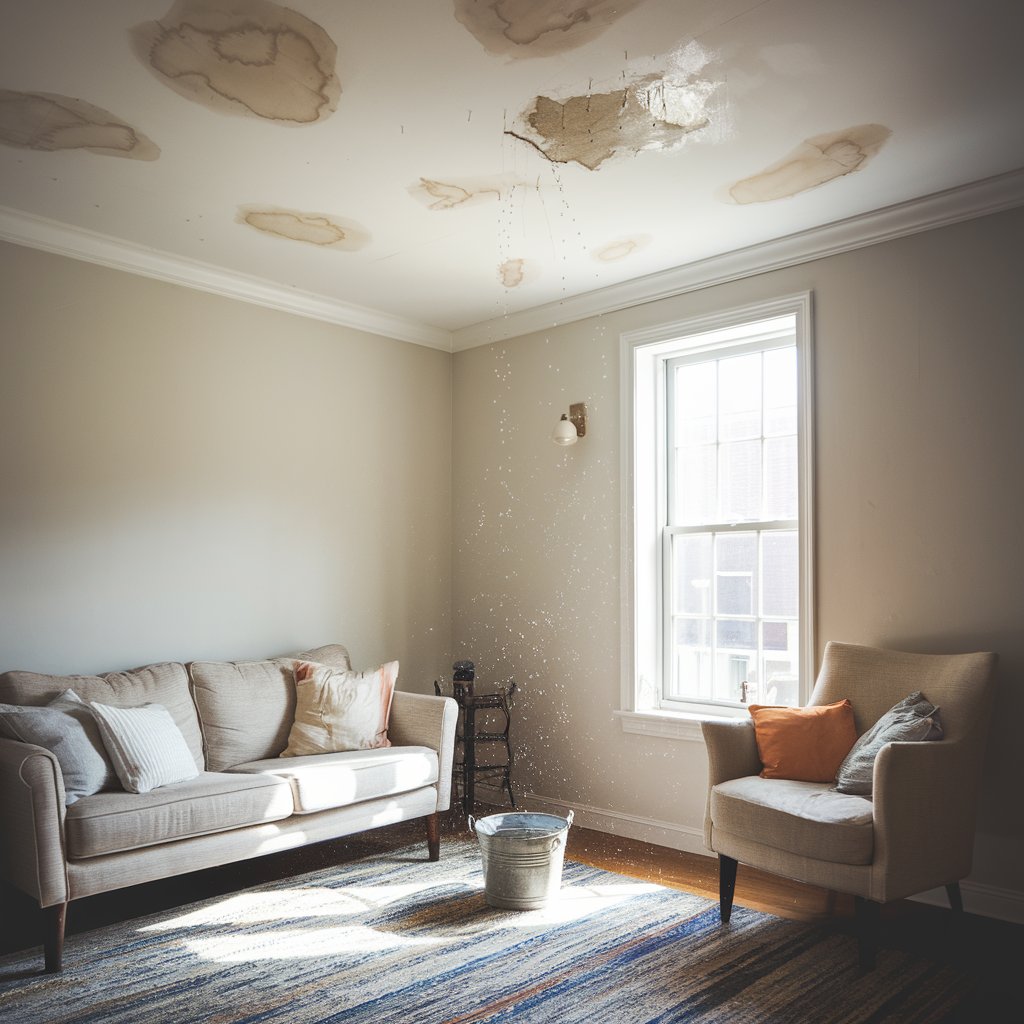MISHub QI
Leaks in Ceilings – Causes, Solutions and Prevention
Leaks in Ceilings – Causes, Solutions and Prevention
Ceiling leaks are a recurring problem in residential, commercial and industrial buildings. They can cause not only structural damage, but also aesthetic damage, such as the appearance of stains, mold and peeling paint, compromising the health of occupants and the durability of finishes. This study addresses in a technical and detailed manner the main causes of leaks, available solutions and prevention strategies.
Causes of Infiltration in Ceilings [1] , [2] , [5]
- Waterproofing Failures
- Problem: Poorly installed, deteriorated or non-existent waterproofing systems.
- Examples: Cracks in roof slabs, insufficient asphalt blankets or liquid membranes.
- Inefficient Drainage
- Problem: Blockage of gutters, drains and downpipes causing water accumulation.
- Example: Restrictions in water flow cause overflow and infiltration.
- Construction or Material Defects
- Problem: Use of low-quality materials, leveling errors or poorly sealed joints.
- Example: Cracks between plasterboard sheets.
- External and Climatic Factors
- Problem: Heavy rain, high humidity and temperature variations.
- Example: Expansion and contraction of materials can generate microcracks.
- Problems in Hydraulic Installations
- Problem: Leaks from recessed pipes near the ceiling.
- Example: Loose connections or corroded pipes.
Aesthetic and Functional Problems Resulting [2] , [3]
-
Ceiling Stains:
They result from continuous infiltrations that carry dirt particles and water-soluble chemical agents. These stains are more visible on newly painted surfaces, due to the difference in paint absorption. -
Peeling and Bubbles in Paint:
Water saturation weakens the adhesion of the paint to the substrate, causing blistering and peeling. -
Mold Development:
Damp areas are prone to the growth of fungi, which in addition to damaging materials, pose health risks.
- Identifying the Source of the Problem
- Use of equipment such as thermal cameras or moisture meters to locate hidden infiltrations.
- Proper waterproofing
- Application of liquid membranes or replacement of asphalt blankets on slabs.
- Reinforcement of joints and cracks with flexible polyurethane sealants.
- Drainage Improvement
- Regular cleaning of gutters and installation of protective grilles.
- Replacement of damaged downpipes.
- Treatment of Hydraulic Installations
- Repair or replacement of damaged pipes.
- Use of pressurized systems for leak testing.
- Aesthetic Correction and Coatings
- Ceiling Stains: After resolving the infiltration, treatment of the area includes:
- Sanding the stains.
- Application of antifungal acrylic sealer.
- Repainting with washable and moisture-resistant paints.
-
Plaster or Drywall:
Replace damaged boards and reinforce joint treatment.
Prevention Strategies (in general) [1] , [3] , [4]
- Quality Waterproofing
- Use high-performance products, such as elastomeric membranes and hybrid systems (polyurethane + cementitious polymers).
- Preventive maintenance
- Periodic inspections of roofs and hydraulic systems.
- Cleaning and review of drainage conditions.
- Suitable Building Materials
- Choose coatings with hydrophobic properties, that is, choose coatings with water-repellent properties.
- Use of waterproof mortars in roofing.
- User Education
- Raise awareness among occupants to report early signs of infiltration.
- Provide guidance on property care.
Preventing Ceiling Stains After Painting [3] , [5]
· Surface Preparation: Before painting, it is essential to properly treat the ceiling, ensuring it is dry, clean and free from mold or mildew.
· Use of Specific Paints: Choosing antifungal and moisture-resistant paints can prevent the appearance of stains and ensure greater durability of the finish.
· Humidity control: Maintaining adequate humidity levels in the indoor environment, using dehumidifiers or improving ventilation, helps to prevent the formation of stains.
Final Considerations
Roof leaks are a multifactorial problem that requires an integrated approach to solve. Adopting modern technologies, choosing high-quality materials and regular maintenance are essential to prevent and mitigate damage. Sustainability must be considered at every stage, opting for solutions that reduce environmental impact.
Bibliographic references
[1] DECORCOLORS. (2024). Infiltration in the ceiling: a complete guide to ending the problem. Available at: https://decorcolors.com.br/blog/reforma/infiltracao-no-teto/ . Accessed on: January 15, 2025
[2] VIVADECORA. (2025). What is Infiltration? Causes, Types, How to Solve and More!. Available at: https://arquitetura.vivadecora.com.br/2025/01/08/infiltracao/ . Accessed on: January 15, 2025.
[3] NACIONAL TELHA. (2021). Infiltration in the ceiling: what are the risks and tips for prevention. Available at: https://nacionaltelha.com.br/infiltracao-no-teto/ . Accessed on: January 18, 2025
[4] SIKA. (2022). Infiltrations: learn how to identify and solve this problem. Available at: https://bra.sika.com/pt/noticias/como-identificar-e-solucionar-problemas-de-infiltracoes.html . Accessed on: January 18, 2025.
[5] EQUILOC. (2024). Infiltration in the Ceiling: Causes, Signs and How to Solve. Available at: https://locadoraequiloc.com.br/blog/infiltracao-no-teto/ . Accessed on: January 16, 2025.
Other Bibliography Consulted
ABNT NBR 9575:2021 – Waterproofing: Selection and Design.
ISOVER Brasil – Study on humidity in drywall systems.
European Standards EN 1504 – Products and systems for the protection and repair of concrete structures.
Author: Eng. Francisco Quisele Jr.
Date of publication : 19/01/25
Share


